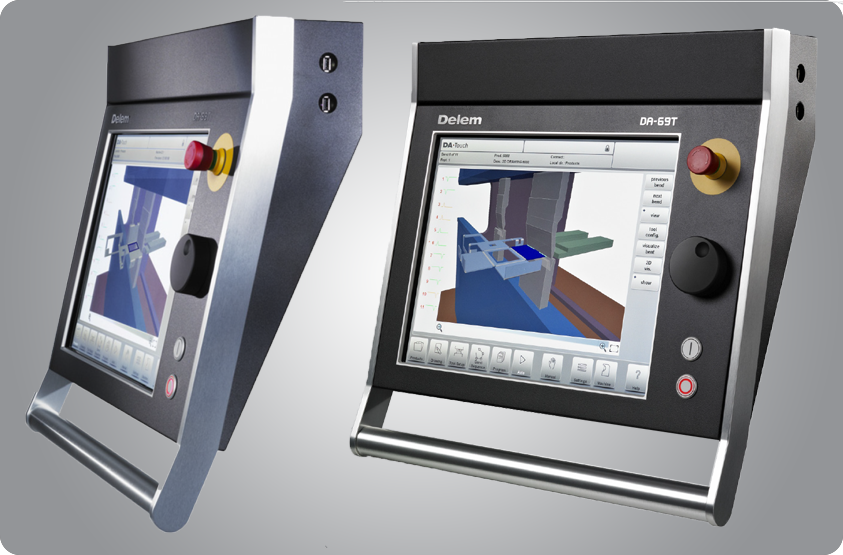Call Us Today!+86 18055583040|admin@zymtcnc.com

Call Us Today!+86 18055583040|admin@zymtcnc.com

1. Bending accuracy requirements
1. If the workpiece to be processed is a high-precision aerospace component, precision electronic equipment housing, etc., a high-precision CNC system needs to be selected. For example, for some precision workpieces that require a bending angle error within ±0.1°, a CNC system with high-precision angle measurement and control functions is required. These systems usually use high-precision encoders to accurately measure the bending angle and perform real-time control through advanced algorithms.
2. Workpiece size and shape complexity
1. For large workpieces (such as large mechanical housings), the CNC system needs to be able to process larger size data and have sufficient storage capacity to store complex processing programs. If the workpiece shape is complex, such as bending with multiple sections of different angles, bending radius changes, etc., the CNC system needs to have powerful graphic programming functions. For example, some 3D complex shape workpiece bending requires the CNC system to be able to perform three-dimensional graphic simulation and programming to ensure the accuracy of the bending process.
3. Production batch and efficiency requirements
1. For batch production, the CNC system must support fast programming and efficient processing processes. For example, it is possible to batch import processing programs and automatically calculate the bending sequence to improve production efficiency. Some CNC systems also have the function of automatic mold selection and adjustment. When batch producing workpieces of different specifications, mold parameters can be quickly switched to reduce mold change time.
1. Programming method
(1) Manual programming: suitable for workpieces with simple shapes. The operator directly inputs parameters such as bending angle and length to write the program. This method is simple and direct, but it is less efficient for complex shapes.
(2) Graphic programming: a very important function for workpieces with complex shapes. The operator can draw the shape of the workpiece on the graphical interface of the CNC system, and the system automatically generates a bending program. For example, by simply drawing a metal sheet shape with multiple bends on the screen, the system can quickly convert it into CNC processing instructions, greatly improving programming efficiency.
(3) Automatic programming: more advanced CNC systems support automatic programming, which can automatically generate bending programs based on CAD files. If the design department of an enterprise uses CAD software for product design, the automatic programming function of the CNC system can be seamlessly connected to reduce errors and time consumption in manual programming.
2. Mold management function
A good CNC system should be able to store a variety of mold parameters, including mold size, pressure requirements, etc. During the processing, it can automatically select the appropriate mold according to the workpiece requirements, and automatically adjust the mold pressure and stroke. For example, when processing plates of different thicknesses, the system can automatically identify and call the appropriate mold, and adjust the bending pressure to ensure the bending quality.
3. Angle compensation function
Due to factors such as plate material, thickness, and mold wear, the actual bending angle may deviate from the theoretical value. The angle compensation function of the CNC system can detect the actual angle through the sensor and automatically adjust the bending parameters to compensate. For example, after long-term use of the mold, it is found that the bending angle has a deviation. The system can automatically adjust the angle control parameters of the subsequent bending according to the detected deviation value to restore the bending angle to the set value.
4. Safety function
The bending machine is a kind of equipment with certain dangers, and the CNC system must have perfect safety functions. For example, there is an emergency stop button, and the machine can be automatically stopped when the program is abnormal (such as pressure overload, excessive position deviation, etc.). At the same time, some CNC systems also have a protective door monitoring function. When the protective door is opened, the bending operation is automatically suspended to ensure the safety of the operator.
1. Brand reputation
Choosing a CNC system from a well-known brand can usually get better quality assurance. For example, brands such as Siemens in Germany and Fanuc in Japan have many years of technical accumulation and good reputation in the field of CNC. The CNC systems of these brands have undergone a lot of practical tests and have high stability and reliability.
2. After-sales service
The CNC system may fail during use, and timely after-sales service is essential. It is necessary to understand whether the supplier has a professional after-sales team that can provide fast technical support, including telephone consultation, on-site maintenance and other services. And consider whether the supply of accessories is sufficient and whether the maintenance cycle is short to reduce the impact of equipment downtime on production.
1. Compatibility with the mechanical part of the bending machine
The CNC system should be perfectly matched with the mechanical structure, hydraulic system or servo motor system of the bending machine. For example, the control signal of the CNC system should be able to accurately drive the hydraulic cylinder of the bending machine to perform precise movements, and its communication protocol should be compatible with devices such as motor drivers to ensure the coordination of the entire bending process.
2. Scalability
Considering the future development of the enterprise and possible equipment upgrade needs, choose a CNC system with scalability. For example, it can easily add new functional modules, such as integration functions with automated loading and unloading equipment, or upgrade to a higher version of the software to support new processing technology and precision requirements.